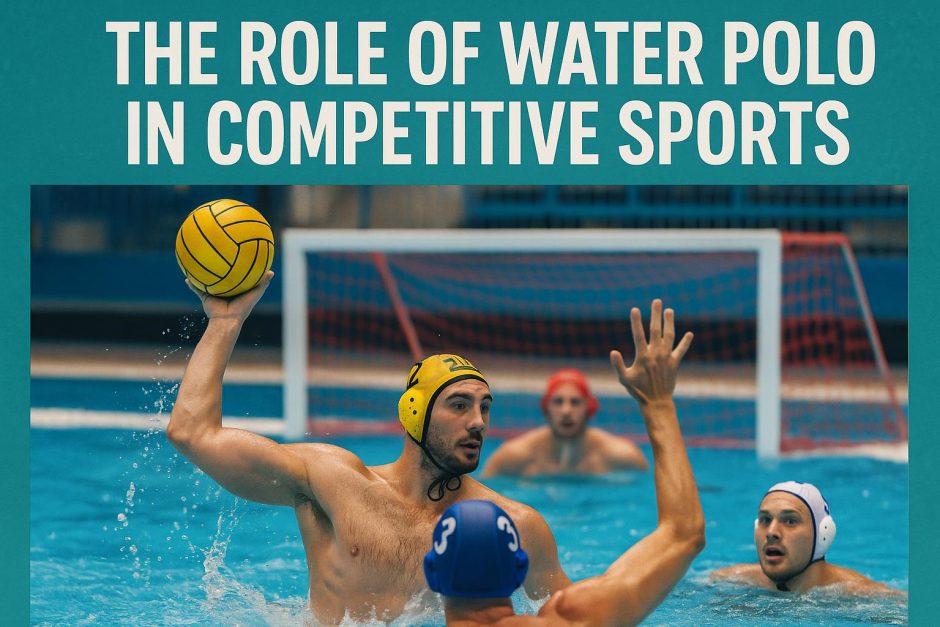The Role of Water Polo in Competitive Sports
Water polo is a dynamic and rigorous sport that has been a part of competitive athletic events for over a century. Known for its intense physical demands and strategic gameplay, water polo offers a unique combination of swimming, contact sports, and team strategy. This makes it an intriguing choice for athletes and spectators alike.
Historical Context of Water Polo
Water polo originated in the late 19th century in Great Britain as an aquatic version of rugby football. Its invention was aimed at creating a thrilling water-based counterpart to the popular land sports of the time. The sport has since evolved considerably in terms of rules, techniques, and international reach. It made its Olympic debut in 1900 for men and was later included for women in 2000. This evolution highlights the sport’s significance and growing popularity worldwide.
Rules and Gameplay
Water polo matches are an engaging blend of skill, teamwork, and strategy. The game is played by two teams, each consisting of seven players, including a goalkeeper, in a pool with specific dimensions. The primary objective is to score goals by throwing a ball into the opposing team’s net, with the team scoring the most goals emerging victorious. The game is divided into four quarters, each lasting several minutes depending on the level of play.
The Pool Environment
The aquatic environment of the sport adds an additional layer of complexity. The pool is deep enough to prevent players from touching the bottom, thus requiring them to tread water continuously using a motion called the “egg-beater” kick. This technique is efficient in maintaining an upright position in the water while allowing for swift movements and quick changes in direction. The players must also possess the ability to swim quickly across the pool during offensive drives and defensive recoveries.
Physical and Tactical Demands
Water polo is often cited as one of the most physically demanding sports due to its combination of swimming, strength, and strategic plays. Athletes need to maintain a high level of aerobic fitness, muscular strength, and flexibility to perform effectively. The constant motion of treading water, coupled with the bursts of high-intensity swimming, requires exceptional cardiovascular conditioning.
From a tactical perspective, water polo requires excellent communication and collaborative skills, as well as the ability to make rapid decisions under pressure. The amalgamation of individual skills and collective efforts is crucial for executing plays, maintaining defensive integrity, and seizing scoring opportunities.
Team Dynamics
A strong emphasis is placed on team dynamics and coordination. Effective communication among players is essential, as it allows teams to organize their offensive setups and transition smoothly into defense. Because the game often involves fast-paced changes in possession, players must be adept at both attacking and defending within seconds. This constant shift challenges the athletes’ ability to adapt and strategize spontaneously.
Training Regimen
The training regimen for water polo players is comprehensive, covering various aspects of fitness, skill, and strategy. Athletes partake in rigorous swimming sessions to improve their endurance and speed, while strength training is employed to enhance their power, particularly for shooting and defensive maneuvers. Moreover, practice drills are conducted to refine ball-handling skills, perfect tactical plays, and foster team synergy.
International Competitions
Water polo has entrenched itself in the international sports arena through several prestigious competitions. Chief among these are the World Aquatics Championships and the European Championships, events that draw elite athletes from around the world. However, the Olympic Games remain the pinnacle of success for water polo athletes, offering a global stage where they can showcase their skills and represent their countries.
The appeal of these international competitions stems from the diversity of playing styles and the high level of competition. Regional variations in the game can be observed, with certain countries known for their defensive prowess and others for their offensive flair. This diversity contributes to the excitement and unpredictability of matches, endearing the sport to a broad audience.
The Future of Water Polo
As water polo continues to gain attention across different regions, efforts to increase its accessibility and promote its growth are ongoing. Grassroots initiatives and developmental programs are being implemented in various countries to nurture young talent and foster a deeper appreciation for the sport. Such initiatives are crucial in sustaining the sport’s vitality and expanding its fan base.
For more detailed information on upcoming events and rules, you can check the official website of the International Swimming Federation (FINA).
Conclusion
In summary, water polo plays a vital role in the landscape of competitive sports. Its combination of physicality, endurance, and strategic depth makes it unique and exciting. As it continues to gain attention, water polo provides a platform for athletes to showcase their talents on a global stage, contributing significantly to the diversity and richness of international sports.
The sport’s challenging nature ensures that it remains a compelling spectacle for both participants and observers, offering dramatic moments and displays of extraordinary athleticism. As water polo surges in popularity and garners more recognition, its influence on the world of sports is set to grow, inspiring future generations of athletes to dive into its waters and partake in its thrilling contests.

